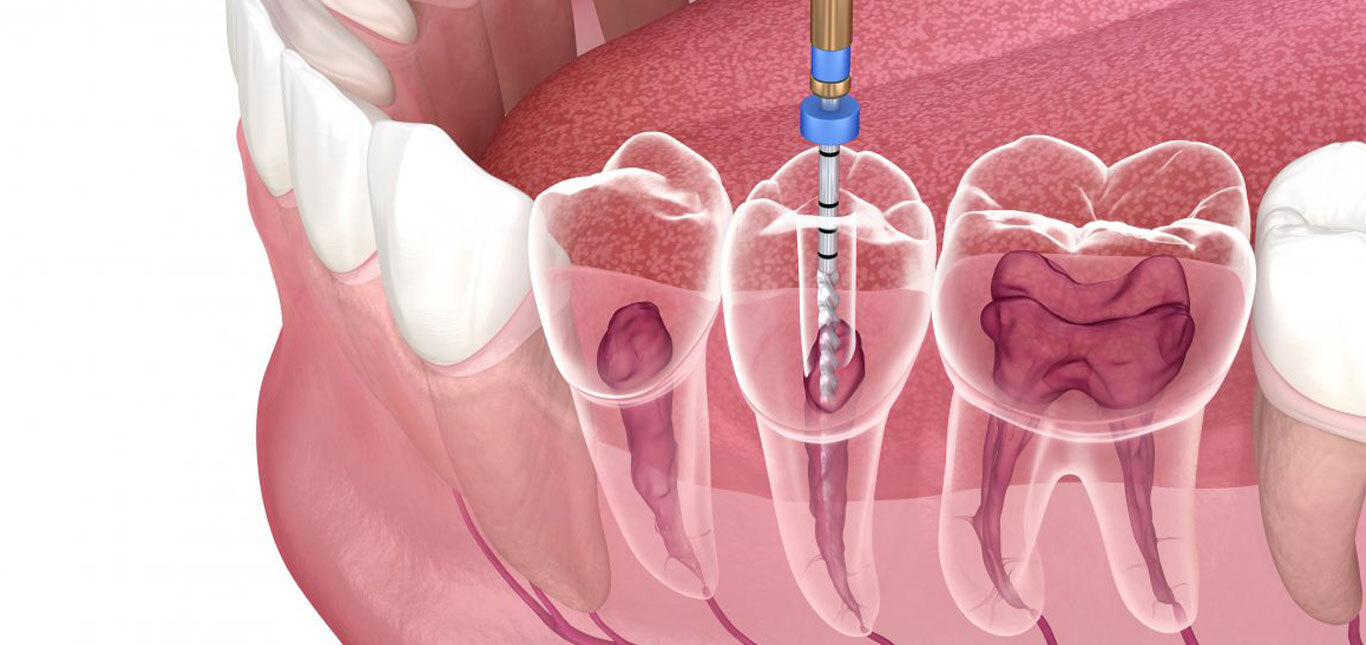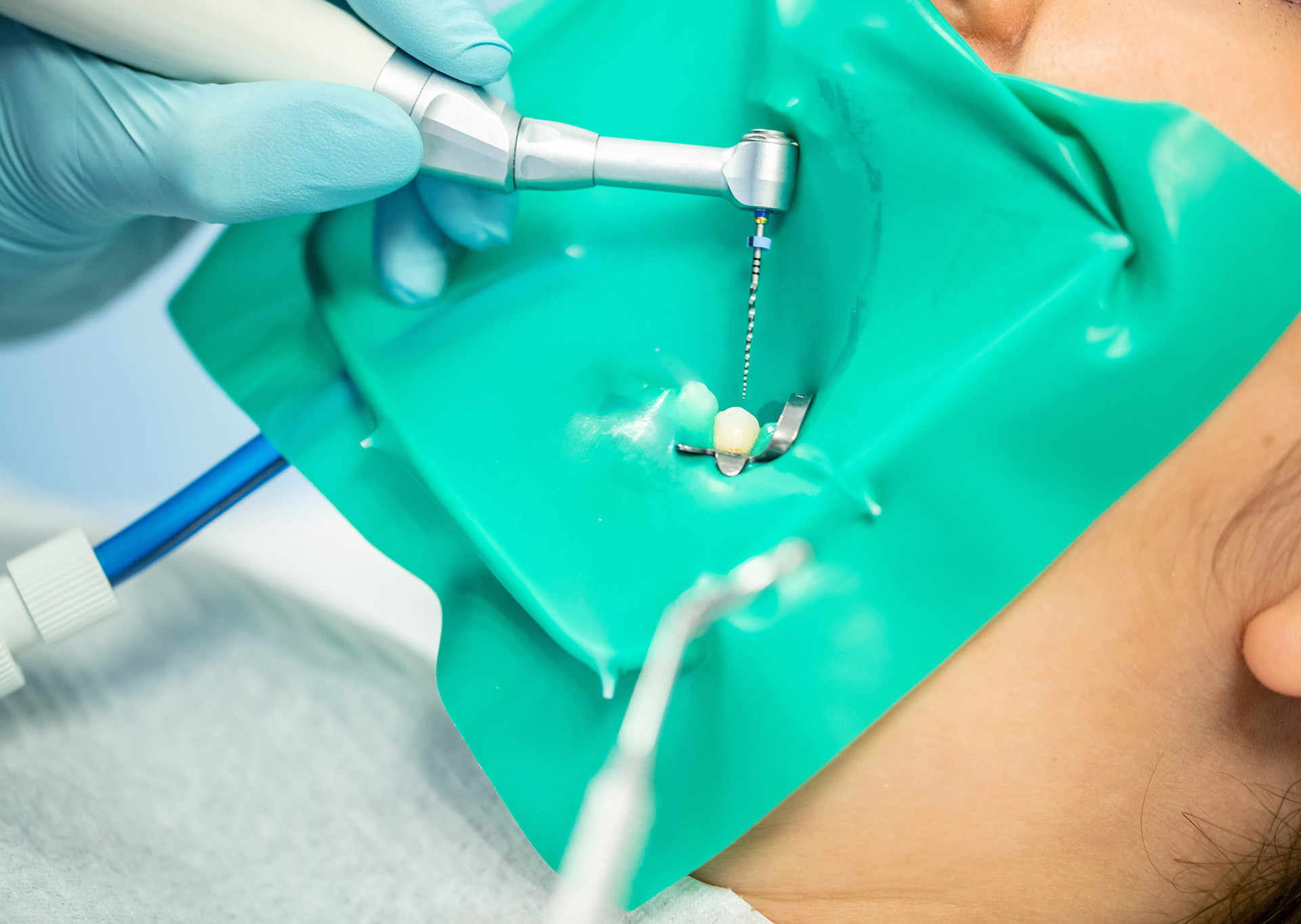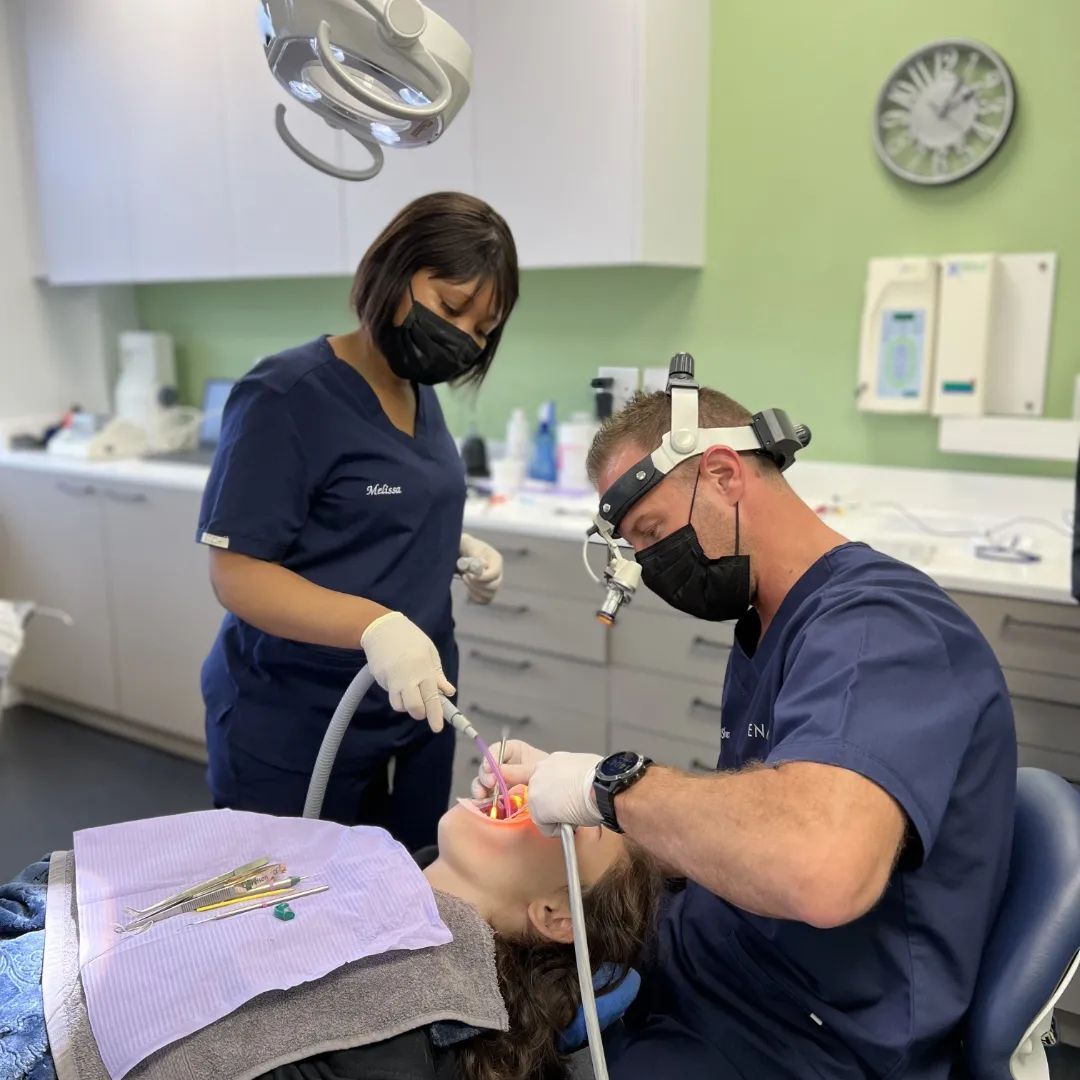
Are your teeth painful, sensitive, and inflamed? Are you being told you need a root canal? You are not alone. An estimated 15 million root canals are performed in the US each year. In this blog, we’ll discuss what a root canal is, symptoms to look out for, and what you can expect during the procedure.



Sometimes, the tissue inside the tooth becomes infected or damaged, requiring a root canal or endodontic treatment. Root canal surgery involves removing the damaged tissue inside the tooth and cleaning and disinfecting it to prevent further damage or infection.
Understanding the anatomy of the tooth helps understand endodontic treatment. The pulp is the soft tissue inside the tooth, underneath the hard dentin layer and the white enamel. During the tooth’s growth, the pulp – made up of connective tissue, blood vessels, and nerves – forms the surrounding hard tissues. Inflammation causes the nerves to become irritated, which is why this condition can be so painful.
A crack or chip in the tooth, extensive decay, or multiple dental treatments could be the source of the inflammation or infection. Your dentist will pick up whether or not you need a root canal. But if you experience persistent throbbing pain, ongoing sensitivity, or swollen gums, it’s best to see your dentist right away.
What’s more, even in teeth without obvious fractures or breaks, trauma to the tooth can still result in pulp damage. If an infection or inflammation of the pulp is not treated, it may result in discomfort or, even worse, an abscess.
If an abscess is left untreated, it can become serious and, in rare cases, even life-threatening. So, other than saving yourself discomfort and pain, prompt root canal treatment is necessary to prevent further complications down the line.
Endodontic treatment saves the tooth through thorough cleaning, disinfection, and restoration. This prevents further trauma and stops bacteria from reentering the tooth, which can reinfect the pulp.
When your dentist performs the procedure, they numb the area to minimize pain. Then, they isolate the tooth using a plastic sheath known as “rubber dam.” The inside of the tooth is then sculpted and cleaned using specialized tools and disinfectants.
After that, the endodontist uses antibiotic paste to fill the canal, and a temporary filling is placed on top. The rubber dam is then removed, and a second appointment is made to finish the procedure.
The temporary filling is taken out during the following visit. The canals are once more treated with disinfectants while a rubber dam and local anesthetics are in place. After that, the root canal system is sealed and filled.
Once the canals are filled, you might be told to revisit your dentist for a crown or other permanent repair. This is important because it shields the tooth from further bacterial invasion, restoring its appearance and maintaining its functionality.
Root canal surgery is virtually painless compared to having your natural tooth extracted. It frequently causes less discomfort during recovery. Patients who get this treatment are less likely to report pain, all thanks to modern methods and anesthetics.
If your teeth need endodontic therapy, consider working with Enamel Clinic. Using state-of-the-art technology, our specialised team will have your teeth pain-free in no time. Book a consultation and find out whether you require a root canal, and we’ll guide you through the process.